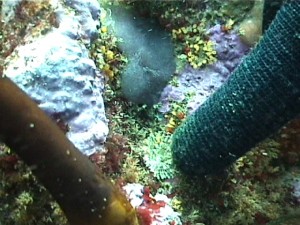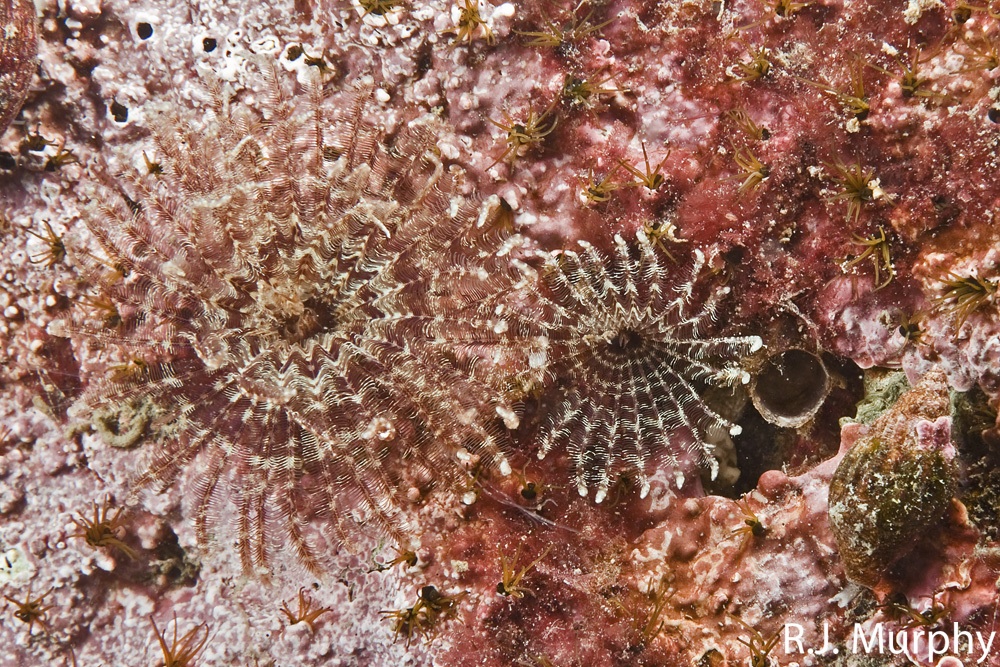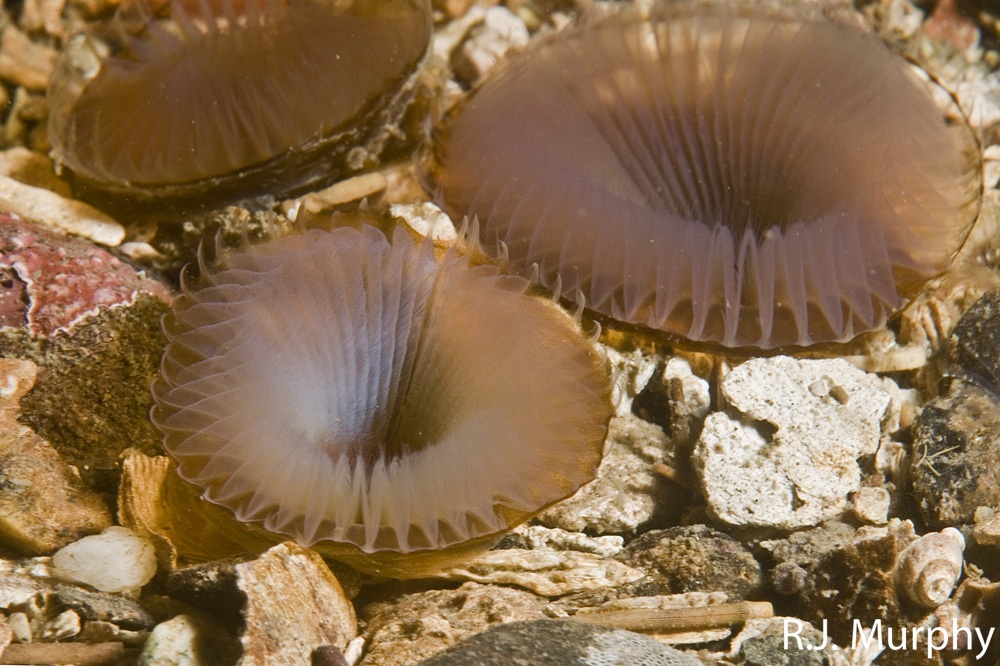-
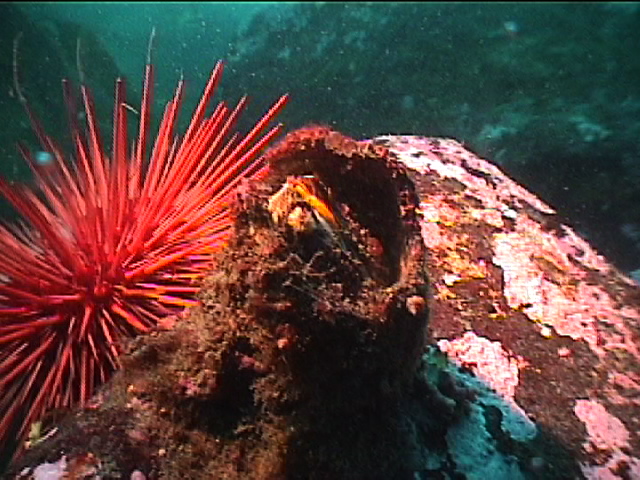
-
Balanus : size comparison with a 25 cm sea urchin
-
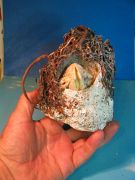
-
This dead Balanus was found on the beach with the holdfasts of two kelps attached.
-
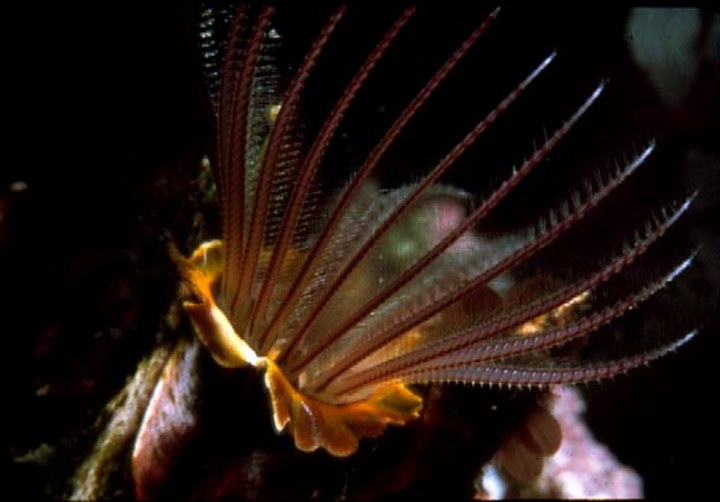
-
The “feet” of the barnacle sweep the water for plankton
-
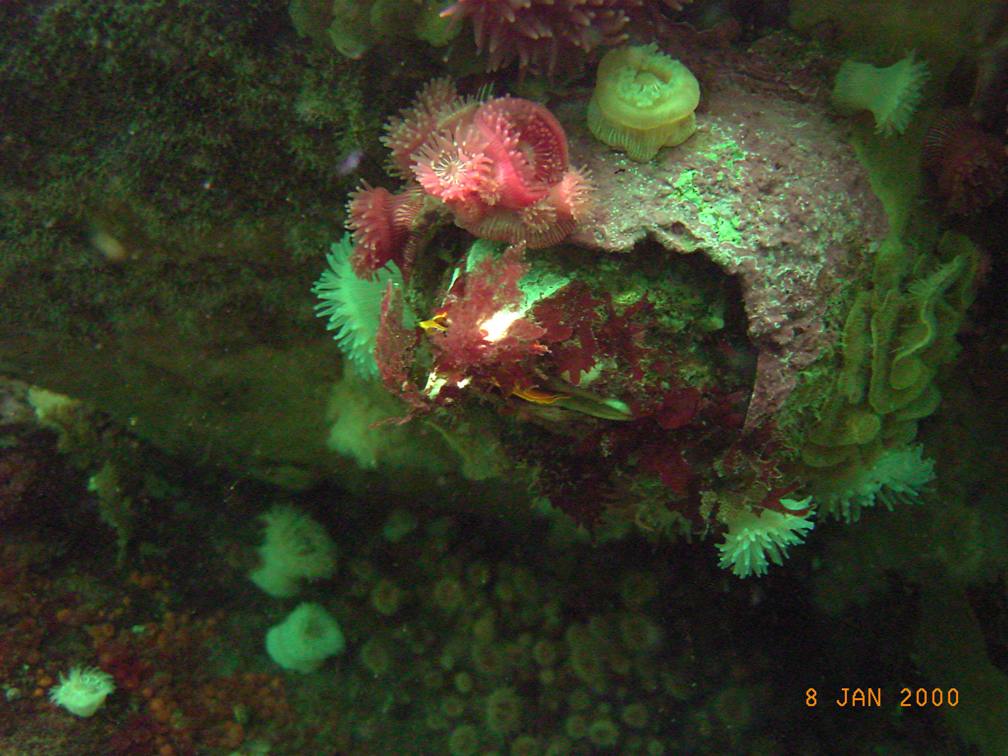
-
Kohei Noda (PC year 32) captured this image of brooding anemones associated with the giant barnacle.
-
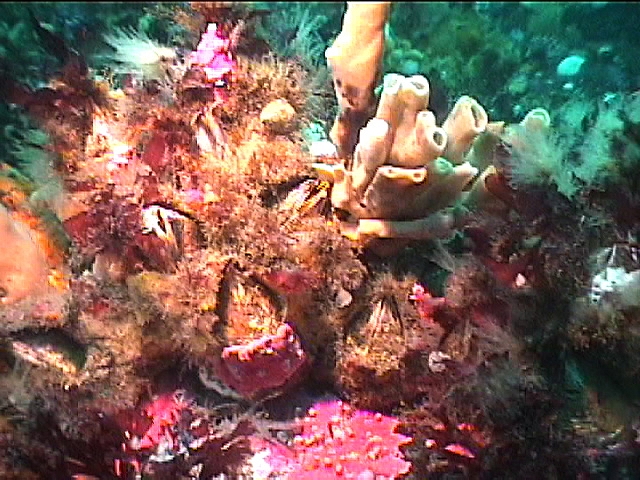
-
We often find the giant barnacles in clusters which provides habitats for many other species.We often find the giant barnacles in clusters which provides habitats for many other species.
-
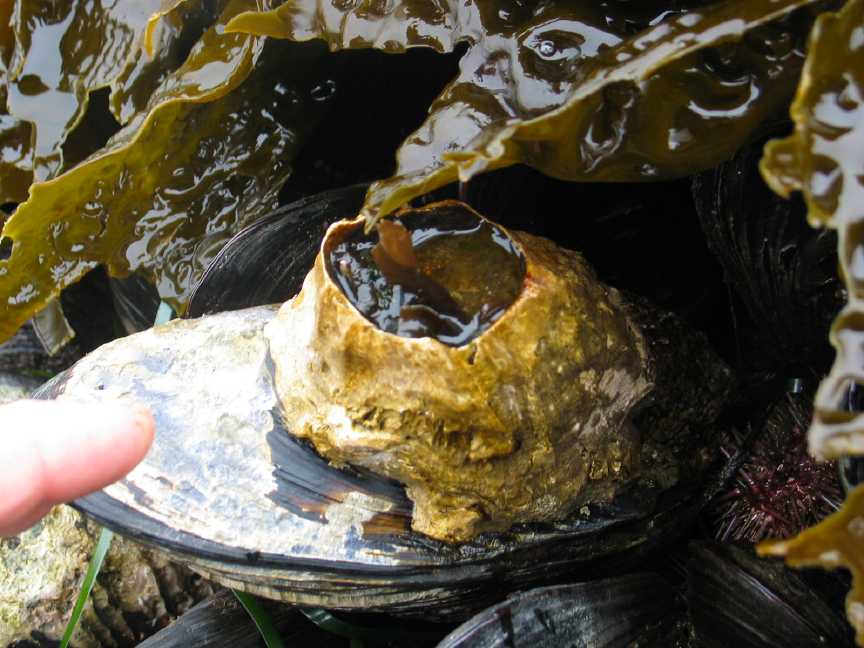
-
Barnacles are not usually parasites, but the weight of this one could eventually impact negatively on the mussel.
The video is of a juvenile barnacle feeding. It was taken by Sylvia Roach through a microscope camera in the marine lab at Pearson College. The size of the barnacle can be estimated by the small skeleton shrimp which is active in the background. That amphipod is less than 1 cm in length.
Research on the associations of hydroids that live on them has been done at Race Rocks by Dr. Anita Brinckmann-Voss. In her publication on the new species Rhysia fletcheri she has included a photograph of hydroids on the valves of this animal.
Domain: Eukarya
Kingdom:Animalia
Phylum: Arthropoda
Class:Crustacea
Subclass: Cirripedia
Order: Thoracica
Suborder: Balanomorpha
Superfamily: Balanoidea
Family: Balanidae
Genus: Balanus
Species nubilus
Common Name: Giant Barnacle
Giant barnacles are commonly found on rocks, pier pilings, and hard-shelled animals in low tidal zones to 90 meters depth.
They are up to 110 mm in diameter and are not easily confused with any other species. A feature unique to the giant barnacle is the lack of longitudinal striation on the scuta. They also contain the largest individual muscle fibres known to science.
There has also been an extended essay done on this association by a student from the college. They are often encrusted with the holdfasts of kelp. Occasionally a storm tearing at the kelp will uproot a mass of barnacles and they may end up on a beach in the masses of tangled kelp. One of the reasons we have a ban on anchoring in the reserve is that these barnacles are easily broken away from their locations on rock outcrops by a dragging anchor.
Barnacles are not usually parasites, but the weight of this one could eventually impact negatively on the mussel.
